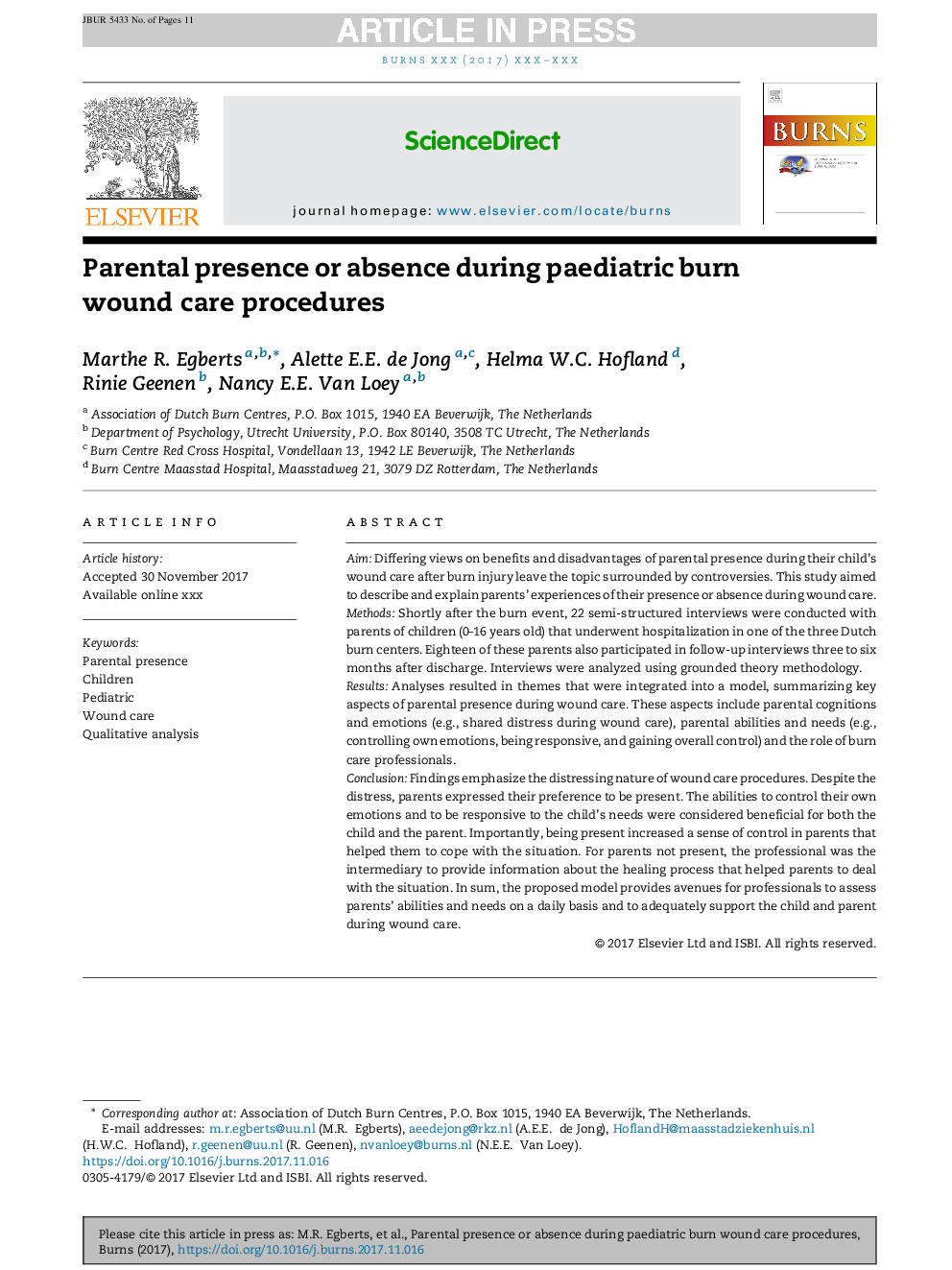| Article ID | Journal | Published Year | Pages | File Type |
|---|---|---|---|---|
| 8694611 | Burns | 2018 | 11 Pages |
Abstract
Findings emphasize the distressing nature of wound care procedures. Despite the distress, parents expressed their preference to be present. The abilities to control their own emotions and to be responsive to the child's needs were considered beneficial for both the child and the parent. Importantly, being present increased a sense of control in parents that helped them to cope with the situation. For parents not present, the professional was the intermediary to provide information about the healing process that helped parents to deal with the situation. In sum, the proposed model provides avenues for professionals to assess parents' abilities and needs on a daily basis and to adequately support the child and parent during wound care.
Related Topics
Health Sciences
Medicine and Dentistry
Critical Care and Intensive Care Medicine
Authors
Marthe R. Egberts, Alette E.E. de Jong, Helma W.C. Hofland, Rinie Geenen, Nancy E.E. Van Loey,
